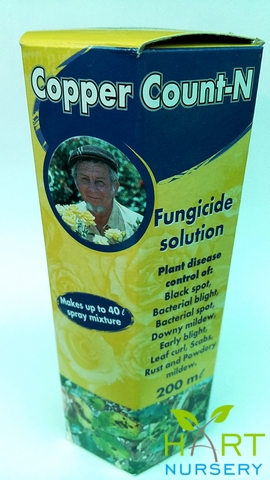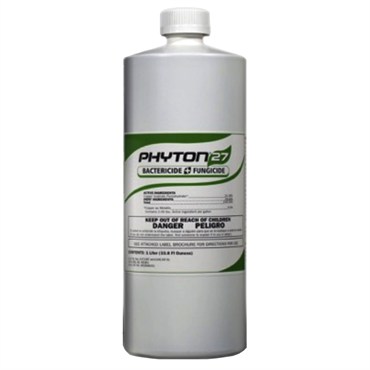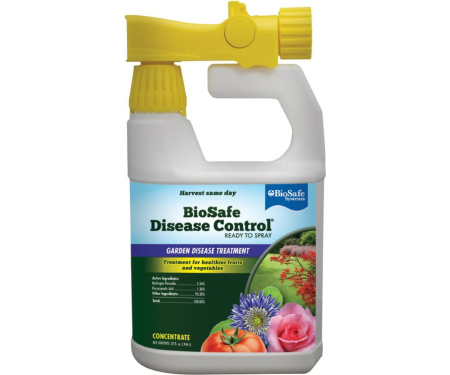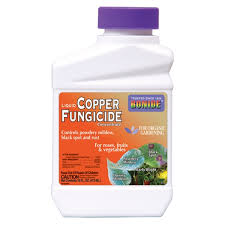
copper based bactericide for indoor plants
M18 FUEL Milwaukee String Trimmer: Will it get the Job Done? I am going to review both products in great detail and then compare them to see which product I would recommend for you to use.  Mix copper exactly using the stated ratio. Otherwise, they will come in a bottle of concentrated liquid copper that normally advises mixing 0.5 to 2 ounces of the liquid per gallon of water in a spray bottle (taking care to use protective gloves and clothing). Sunday, February 6th @ 11am. This 32-ounce, ready-to-use spray by Monterey allows you to apply diluted fungicide solution directly and safely onto your plants from the bottle thanks to the easy trigger spray nozzle. Amazon ShoppingGardening Best SellersFarm and Ranch SuppliesGardening SuppliesGenerators and Portable PowerGrills and Outdoor CookingMowers and Outdoor Power ToolsOutdoor DecorOutdoor HeatingOutdoor StoragePatio Furniture and AccessoriesPest ControlPools Hot Tubs and SuppliesSnow Removal.
Mix copper exactly using the stated ratio. Otherwise, they will come in a bottle of concentrated liquid copper that normally advises mixing 0.5 to 2 ounces of the liquid per gallon of water in a spray bottle (taking care to use protective gloves and clothing). Sunday, February 6th @ 11am. This 32-ounce, ready-to-use spray by Monterey allows you to apply diluted fungicide solution directly and safely onto your plants from the bottle thanks to the easy trigger spray nozzle. Amazon ShoppingGardening Best SellersFarm and Ranch SuppliesGardening SuppliesGenerators and Portable PowerGrills and Outdoor CookingMowers and Outdoor Power ToolsOutdoor DecorOutdoor HeatingOutdoor StoragePatio Furniture and AccessoriesPest ControlPools Hot Tubs and SuppliesSnow Removal.  However, copper fungicide is more of a preventive measure than actual treatment. Keep affected plants isolated to avoid spreading fungal spores to healthy ones. Even after the drying period, heavy rains impact spray effectiveness re-apply a dormant spray if it gets washed away in the first 2 to 3 days after application. Copper fungicide is only effective as a preventative against fungal disease, while neem oil can be used as an insecticide and as a fungicide. Everything You Need To Know About How To Revive Dead Grass. Presenter: Darren Morgan which combines copper and lime and is often applied to trunks with a wide paintbrush. How do you use copper fungicide on plants?How do you use copper fungicide on plants? Corvallis, OR 97333 | 541-929-3524 | STORE HOURS: MON SAT 9am 5pm, SUN 10am 5pm. 7 Best Small Zero Turn Mowers For Your Garden, 8 Best Rototiller/ Mini Cultivator/ Mini Tiller, The Best Small Garden Tiller (Mini Tiller / Rototiller) in 2022, The Best Walk Behind String Trimmer in 2022. Here Is Why & How To Get Rid of Them, How To Sterilize Soil: 8 Simple Methods for Home Gardeners, Podocarpus Growth Rate & Mature Size (Popular Varieties), Huckleberry vs. Elderberry: Plant ID, Taste, Benefits & Uses. Well, both are very different when it comes to how they are used. This is because neem oil contains a component called azadirachtin which is excellent at killing and repelling pests. Like I said earlier, its best to apply copper fungicide before your plants actually become affected by fungal disease, so its best if you start applying copper fungicide to your plants before temperatures and humidity increase in your area. Its also very strong, risking overkill when used in large amounts, so be sure to use it sparingly, and make sure you have correctly identified a fungal infection on your indoor or outdoor plant before applying it. For best results, copper fungicide should only be applied as a preventative measure in the fall or before leaf emergence, according to the, product to mix with water or apply using a dust miser and a, Why Is Your Basil Flowering (And What You Should Do), Why Is Your Mint Flowering? document.getElementById("ak_js_1").setAttribute("value",(new Date()).getTime()); This site uses Akismet to reduce spam. Lets look at how it can be used and how safe it is, and well share our pick of the best copper fungicide products and more.
However, copper fungicide is more of a preventive measure than actual treatment. Keep affected plants isolated to avoid spreading fungal spores to healthy ones. Even after the drying period, heavy rains impact spray effectiveness re-apply a dormant spray if it gets washed away in the first 2 to 3 days after application. Copper fungicide is only effective as a preventative against fungal disease, while neem oil can be used as an insecticide and as a fungicide. Everything You Need To Know About How To Revive Dead Grass. Presenter: Darren Morgan which combines copper and lime and is often applied to trunks with a wide paintbrush. How do you use copper fungicide on plants?How do you use copper fungicide on plants? Corvallis, OR 97333 | 541-929-3524 | STORE HOURS: MON SAT 9am 5pm, SUN 10am 5pm. 7 Best Small Zero Turn Mowers For Your Garden, 8 Best Rototiller/ Mini Cultivator/ Mini Tiller, The Best Small Garden Tiller (Mini Tiller / Rototiller) in 2022, The Best Walk Behind String Trimmer in 2022. Here Is Why & How To Get Rid of Them, How To Sterilize Soil: 8 Simple Methods for Home Gardeners, Podocarpus Growth Rate & Mature Size (Popular Varieties), Huckleberry vs. Elderberry: Plant ID, Taste, Benefits & Uses. Well, both are very different when it comes to how they are used. This is because neem oil contains a component called azadirachtin which is excellent at killing and repelling pests. Like I said earlier, its best to apply copper fungicide before your plants actually become affected by fungal disease, so its best if you start applying copper fungicide to your plants before temperatures and humidity increase in your area. Its also very strong, risking overkill when used in large amounts, so be sure to use it sparingly, and make sure you have correctly identified a fungal infection on your indoor or outdoor plant before applying it. For best results, copper fungicide should only be applied as a preventative measure in the fall or before leaf emergence, according to the, product to mix with water or apply using a dust miser and a, Why Is Your Basil Flowering (And What You Should Do), Why Is Your Mint Flowering? document.getElementById("ak_js_1").setAttribute("value",(new Date()).getTime()); This site uses Akismet to reduce spam. Lets look at how it can be used and how safe it is, and well share our pick of the best copper fungicide products and more.  Larvae are also prevented from maturing and disrupt the mating cycle, stopping the insects from being able to breed around your plant. Although neem oil is not toxic, it is best to avoid using it when important insects are nearby to avoid any potential issues. It can help stop diseases like fire blight and anthracnose (two very infamous diseases that annoy gardeners to no end) which makes it very valuable to a lot of gardeners. Because copper is toxic, it can also cause serious damage by killing plant tissues.
Larvae are also prevented from maturing and disrupt the mating cycle, stopping the insects from being able to breed around your plant. Although neem oil is not toxic, it is best to avoid using it when important insects are nearby to avoid any potential issues. It can help stop diseases like fire blight and anthracnose (two very infamous diseases that annoy gardeners to no end) which makes it very valuable to a lot of gardeners. Because copper is toxic, it can also cause serious damage by killing plant tissues.  How to Get Rid Of Snails in Your Garden 8 Effective Ways.
How to Get Rid Of Snails in Your Garden 8 Effective Ways. 
 Gardening and farming are very time-consuming projects and seeing all of your hard work ruined due to a bunch of pesky bugs and fungi.
Gardening and farming are very time-consuming projects and seeing all of your hard work ruined due to a bunch of pesky bugs and fungi.  Dont expect copper fungicide to cure an existing fungal disease. Spray fruit trees and berries to reduce scab, mildew, leaf and cane spots, and bacterial blights.
Dont expect copper fungicide to cure an existing fungal disease. Spray fruit trees and berries to reduce scab, mildew, leaf and cane spots, and bacterial blights. 
 Usually, this ratio is around one or two teaspoons per gallon of water but this can vary from product to product. Hope you like what we write. It does not break down and will accumulate in your soil unless washed away, which means that the good bacteria and organisms that live in that soil can be killed by overusing copper fungicide. This is because not only is neem oil safer for your soil and plants, but it also works to protect and treat various fungal diseases and repel pests. The improved composition offers higher biological activity over typical copper-based products, while requiring significantly less copper in the composition. Avoid use on copper-sensitive plants, however, such as bromeliads, ivy, and annual geraniums. Spices: Whats the Difference and Why Does it Matter for Gardeners? It is a fairly weak form of copper, but tends not to wash off and is less likely to cause plant damage.
Usually, this ratio is around one or two teaspoons per gallon of water but this can vary from product to product. Hope you like what we write. It does not break down and will accumulate in your soil unless washed away, which means that the good bacteria and organisms that live in that soil can be killed by overusing copper fungicide. This is because not only is neem oil safer for your soil and plants, but it also works to protect and treat various fungal diseases and repel pests. The improved composition offers higher biological activity over typical copper-based products, while requiring significantly less copper in the composition. Avoid use on copper-sensitive plants, however, such as bromeliads, ivy, and annual geraniums. Spices: Whats the Difference and Why Does it Matter for Gardeners? It is a fairly weak form of copper, but tends not to wash off and is less likely to cause plant damage.  This can be frustrating and one mistake can have dire consequences, but properly reading the instructions on the packaging should be enough to avoid this. (And What You Should Do), NPK 16-4-8 Fertilizer: Why, When, Where & How To Use It, Got Garden Grubs? Some say it can be hugely beneficial, and others claim that it can be a little too intense. Proper care in the dormant season can alleviate disease and insect problems during the growing season. How to Start Seeds in Milk Jug Greenhouses, Plants that Grow Well Indoors to Expand your Indoor Garden, How to Grow and Use Ornamental Corn for Dazzling Decorations, Hydroponic Systems 101 and Choosing the Perfect System for You, Xeriscape Garden: How to Conserve Water With Xeriscaping Principles, The Truth About Peat Moss in Your Garden and 5 Eco-Friendly Alternatives, How to Grow and Take Care of Fiddle-Leaf Figs, Growing Arugula: The Complete Guide to Plant, Care, and Harvest Arugula, Buying Seeds Strategically: A Frugal Gardeners Guide to Ordering Seeds, 5 Reasons to Start a Pollinator Garden (and 6 Tips to Help You Do It), How to Make Herbal Salts Using Plants Growing in Your Garden, An In-Depth Guide to Straw Bale Gardening for Beginners, 15 Uses for Pine Needles Around the Home and Garden, Growing Apriums: How to Plant, Care For, and Harvest These Tasty Hybrids, Swap Out Grass with These 14 Edible Lawn Replacements, 32 of the Best Fast-Growing Trees to Plant in Your Garden, 5 Steps to Control Garden Pests in the Fall for Healthy Crops Next Year, 18 Plants to Grow in Wet Soil and How to Fix Wet Soil Problems. The recommended time between applications is at least seven days, but always check the instructions on the copper fungicide you have bought to be sure the time is no longer. It offers a fairly strong protection, but it is harder to mix in the sprayer, washes off a bit more easily, and is more likely to cause damage to plants during prolonged heat or moisture, or on tender new growth, so is best used on dormant trees and shrubs, or on young seedling vegetables. Rotate your crops. since copper sulfate is still a much-relied-upon fungicide. It is suitable for only very limited applications through the growing season. For example: Basic copper sulfate is a powder. Gordon C. Johnson explains that copper ions are released in small amounts when copper residues are wetted, sending them to other areas of the plant to penetrate cells.
This can be frustrating and one mistake can have dire consequences, but properly reading the instructions on the packaging should be enough to avoid this. (And What You Should Do), NPK 16-4-8 Fertilizer: Why, When, Where & How To Use It, Got Garden Grubs? Some say it can be hugely beneficial, and others claim that it can be a little too intense. Proper care in the dormant season can alleviate disease and insect problems during the growing season. How to Start Seeds in Milk Jug Greenhouses, Plants that Grow Well Indoors to Expand your Indoor Garden, How to Grow and Use Ornamental Corn for Dazzling Decorations, Hydroponic Systems 101 and Choosing the Perfect System for You, Xeriscape Garden: How to Conserve Water With Xeriscaping Principles, The Truth About Peat Moss in Your Garden and 5 Eco-Friendly Alternatives, How to Grow and Take Care of Fiddle-Leaf Figs, Growing Arugula: The Complete Guide to Plant, Care, and Harvest Arugula, Buying Seeds Strategically: A Frugal Gardeners Guide to Ordering Seeds, 5 Reasons to Start a Pollinator Garden (and 6 Tips to Help You Do It), How to Make Herbal Salts Using Plants Growing in Your Garden, An In-Depth Guide to Straw Bale Gardening for Beginners, 15 Uses for Pine Needles Around the Home and Garden, Growing Apriums: How to Plant, Care For, and Harvest These Tasty Hybrids, Swap Out Grass with These 14 Edible Lawn Replacements, 32 of the Best Fast-Growing Trees to Plant in Your Garden, 5 Steps to Control Garden Pests in the Fall for Healthy Crops Next Year, 18 Plants to Grow in Wet Soil and How to Fix Wet Soil Problems. The recommended time between applications is at least seven days, but always check the instructions on the copper fungicide you have bought to be sure the time is no longer. It offers a fairly strong protection, but it is harder to mix in the sprayer, washes off a bit more easily, and is more likely to cause damage to plants during prolonged heat or moisture, or on tender new growth, so is best used on dormant trees and shrubs, or on young seedling vegetables. Rotate your crops. since copper sulfate is still a much-relied-upon fungicide. It is suitable for only very limited applications through the growing season. For example: Basic copper sulfate is a powder. Gordon C. Johnson explains that copper ions are released in small amounts when copper residues are wetted, sending them to other areas of the plant to penetrate cells.  Dont use overhead sprinklers, which can help transmit fungal disease. When used in large quantities, the copper element can cause phytotoxicity, killing or severely damaging plant tissues. The wet leaves allow the copper ions of the fungicide to penetrate them deeply, killing pathogens and altering the enzymes there. Not all copper fungicides are equal.
Dont use overhead sprinklers, which can help transmit fungal disease. When used in large quantities, the copper element can cause phytotoxicity, killing or severely damaging plant tissues. The wet leaves allow the copper ions of the fungicide to penetrate them deeply, killing pathogens and altering the enzymes there. Not all copper fungicides are equal.  So be sure you have correctly identified the disease on your plant before using copper fungicide in haste. Many seed catalogs list the disease resistance of vegetables especially susceptible plants like tomatoes and peppers. The Mid-Summer Orchard and Garden: Tasks to do right now to keep it flourishing! Before we address its uses and effectiveness, lets start from the beginning . So, when it comes to versatility and use, neem oil wins out as you can use it to prevent and treat more pests and diseases plus it is safer to use. Neem oil works as an excellent pesticide against many insects but it is most useful against insects like mites, aphids, and whiteflies. However, a copper fungicide can be used as more than just a preventative against fungal diseases.
So be sure you have correctly identified the disease on your plant before using copper fungicide in haste. Many seed catalogs list the disease resistance of vegetables especially susceptible plants like tomatoes and peppers. The Mid-Summer Orchard and Garden: Tasks to do right now to keep it flourishing! Before we address its uses and effectiveness, lets start from the beginning . So, when it comes to versatility and use, neem oil wins out as you can use it to prevent and treat more pests and diseases plus it is safer to use. Neem oil works as an excellent pesticide against many insects but it is most useful against insects like mites, aphids, and whiteflies. However, a copper fungicide can be used as more than just a preventative against fungal diseases.  Ideally, apply copper fungicide before fungus is visible.
Ideally, apply copper fungicide before fungus is visible.  Copper fungicides are available in a variety of formulations, and each has some advantages and disadvantages for certain seasons, crops, or diseases. As for dealing with early symptoms of disease on mature plants, copper fungicide can safely be applied every 7-10 days up until harvest. Learn the proper techniques, timing, and products for fruit tree spraying. Neem oil is also biodegradable which means that it will break down in the soil and not leave residues that can build up over time and contaminate your soil. In your search for plant fungus remedies, youve likely heard that many gardeners swear by copper-based fungicides. I've been gardening for many years and one day a friend said to me, "you orta share your knowledge with everyone else", so here I am. Do not spray when the air temperature is below freezing, or is expected to drop below freezing before spray dries. How to Use Your New Soil Moisture Meter in 4 Easy Steps. As copper fungicide is a deterrent and not a cure, it wont always be effective on plants with a late stage of blight. Follow frequency requirements and reapply according to the direction.
Copper fungicides are available in a variety of formulations, and each has some advantages and disadvantages for certain seasons, crops, or diseases. As for dealing with early symptoms of disease on mature plants, copper fungicide can safely be applied every 7-10 days up until harvest. Learn the proper techniques, timing, and products for fruit tree spraying. Neem oil is also biodegradable which means that it will break down in the soil and not leave residues that can build up over time and contaminate your soil. In your search for plant fungus remedies, youve likely heard that many gardeners swear by copper-based fungicides. I've been gardening for many years and one day a friend said to me, "you orta share your knowledge with everyone else", so here I am. Do not spray when the air temperature is below freezing, or is expected to drop below freezing before spray dries. How to Use Your New Soil Moisture Meter in 4 Easy Steps. As copper fungicide is a deterrent and not a cure, it wont always be effective on plants with a late stage of blight. Follow frequency requirements and reapply according to the direction. 
 Required fields are marked *. So how do copper fungicide and neem oil compare to each other? Stay tuned for the first newsletter in the morning, straight to your inbox. When used in small amounts and as directed on the label, copper fungicide is perfectly safe for humans. Always follow the guidelines set by the manufacturer as each product may vary in terms of dosage and may mention certain weather or temperature limits for the fungicide to be used to best effect. Prune out infected leaves at the first sign of an issue. Whenever possible, at least 12 hours of dry weather should follow a copper fungicide application. Simply mix in with water, and use as a cover spray using a hose-end sprayer to apply to your favorite fruits, vegetables, and ornamentals. Copper fungicide has many benefits including how well it works as a preventative against fungal diseases. Its non-toxic which means that it is fine to use around birds, bees, and other beneficial wildlife, but it is easily absorbed by the plant. Its also important to check with the copper fungicide you have bought as this general guideline may vary from product to product. It is a preventative, not a form of treatment. While copper fungicide products combine copper with added compounds such as salt and acid, neem oil is a naturally-occurring fungicide found in the seeds of the. What is the Difference Between a Lawn Edger and a Lawn Trimmer? Copper fungicide can be a very effective preventative when it comes to keeping many of your plants and trees disease free. Plant varieties resistant to fungus diseases common in your area. However, copper fungicide is not perfect. This has divided many organic growers since copper sulfate is still a much-relied-upon fungicide.
Required fields are marked *. So how do copper fungicide and neem oil compare to each other? Stay tuned for the first newsletter in the morning, straight to your inbox. When used in small amounts and as directed on the label, copper fungicide is perfectly safe for humans. Always follow the guidelines set by the manufacturer as each product may vary in terms of dosage and may mention certain weather or temperature limits for the fungicide to be used to best effect. Prune out infected leaves at the first sign of an issue. Whenever possible, at least 12 hours of dry weather should follow a copper fungicide application. Simply mix in with water, and use as a cover spray using a hose-end sprayer to apply to your favorite fruits, vegetables, and ornamentals. Copper fungicide has many benefits including how well it works as a preventative against fungal diseases. Its non-toxic which means that it is fine to use around birds, bees, and other beneficial wildlife, but it is easily absorbed by the plant. Its also important to check with the copper fungicide you have bought as this general guideline may vary from product to product. It is a preventative, not a form of treatment. While copper fungicide products combine copper with added compounds such as salt and acid, neem oil is a naturally-occurring fungicide found in the seeds of the. What is the Difference Between a Lawn Edger and a Lawn Trimmer? Copper fungicide can be a very effective preventative when it comes to keeping many of your plants and trees disease free. Plant varieties resistant to fungus diseases common in your area. However, copper fungicide is not perfect. This has divided many organic growers since copper sulfate is still a much-relied-upon fungicide.  Learn how your comment data is processed. While copper fungicide is not great at treating fungal diseases, neem oil can sometimes kill fungi that infect your plants.
Learn how your comment data is processed. While copper fungicide is not great at treating fungal diseases, neem oil can sometimes kill fungi that infect your plants.
- Roll Off Trailer For Sale Canada
- Fiberglass Well Covers
- Language Processing Psychology
- 3090 Graphics Card In Stock
- Disposable Sanitary Pads
- National Tree Company With Lights
- Window Squeegee Professional
- Peggy's House Of Flowers

copper based bactericide for indoor plants